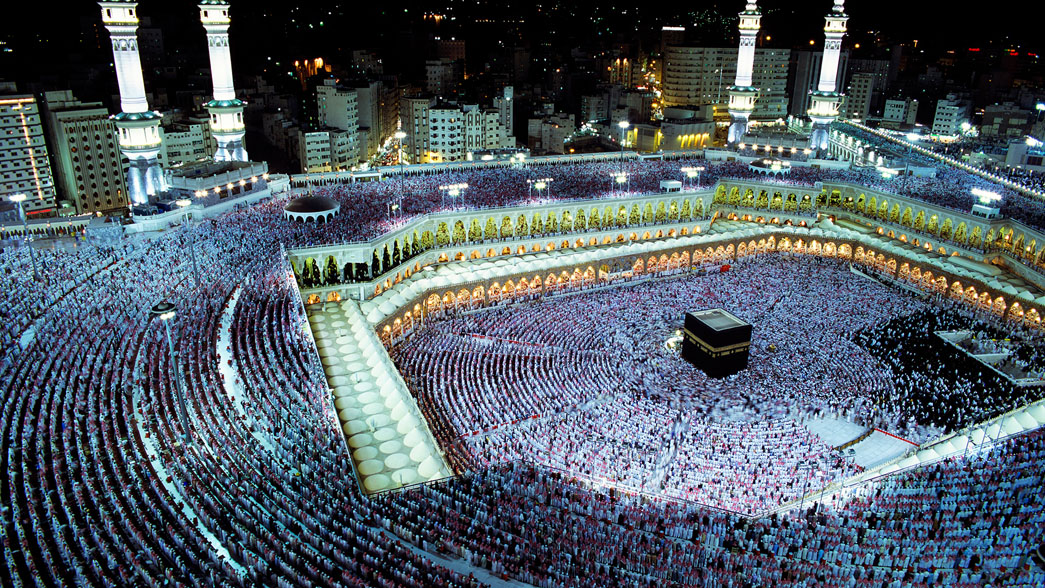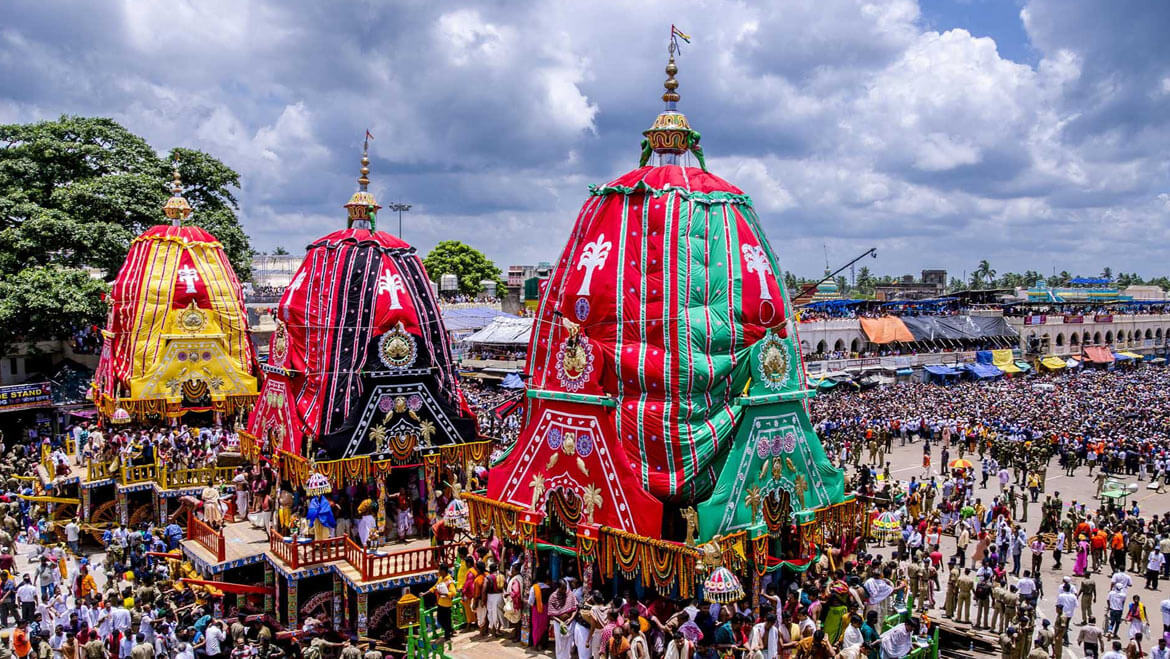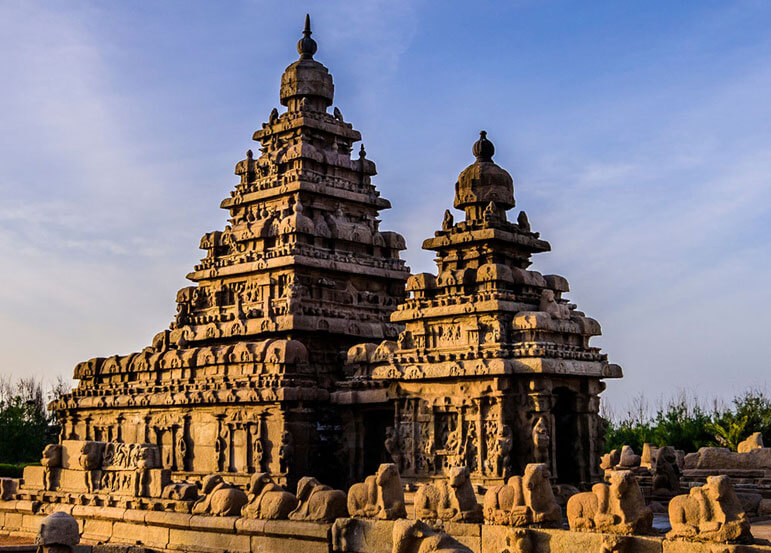Historical Roots Of Sacred Quests - Tracing The Path Of Religious Pilgrimages
In this article, we delve into the rich tapestry of religious pilgrimages, exploring their historical roots, cultural impact, and the profound experiences they offer to pilgrims worldwide.
Author:Velma BattleReviewer:Michael RachalDec 21, 2023988 Shares54.8K Views

Religious pilgrimages have stood the test of time as powerful manifestations of faith and devotion, transcending cultural boundaries and connecting believers to sacred destinations. In this article, we delve into the rich tapestry of Religious Pilgrimages, exploring their historical roots, cultural impact, and the profound experiences they offer to pilgrims worldwide.
Historical Roots Of Religious Pilgrimages
Religious Pilgrimages - A Time-Honored Tradition
The tradition of religious pilgrimages is a timeless thread woven into the fabric of human spirituality, tracing its roots through the corridors of history for millennia. Across diverse faiths and cultures, the pilgrimage has emerged as a sacred rite, embodying a profound connection between the earthly and the divine. This article explores the rich historical roots of religious pilgrimages, illuminating their significance in shaping the spiritual landscapes of various traditions.
Journeys Through Time And Faith
The notion of embarking on a pilgrimage transcends geographical and cultural boundaries, finding expression in the sacred texts, teachings, and oral traditions of numerous religions. Each pilgrimage, whether a sacred trek to Mecca, a pilgrimage across the Spanish landscape, or a dip in the holy rivers of India, carries a unique historical tapestry, interwoven with the beliefs and practices of the faithful.
The Hajj - Islam's Pinnacle Pilgrimage
In Islam, the Hajj stands as a testament to the submission and unity of believers. Dating back to the time of Prophet Abraham, the Hajj retraces the footsteps of this revered figure and his family. The rituals performed during the Hajj symbolize devotion, equality, and the surrender of the individual to the will of Allah. As the cornerstone of Islam's Five Pillars, the Hajj exemplifies the commitment of Muslims to their faith and its historical roots.
Camino De Santiago - A Christian Pilgrimage Across Centuries
Christianity, too, boasts a rich tapestry of pilgrimages, with the Camino de Santiago standing out as a remarkable journey of faith. Pilgrims, known as "peregrinos," traverse ancient trails, converging on the Cathedral of Santiago de Compostela in Spain. This pilgrimage, rooted in medieval traditions, provides a profound opportunity for spiritual reflection and self-discovery, echoing the Christian concept of life as a pilgrimage towards salvation.
Kumbh Mela - The Cosmic Confluence In Hinduism
Hinduism's Kumbh Mela, a colossal gathering of devotees at the confluence of sacred rivers, exemplifies the diversity within religious pilgrimages. Rooted in ancient texts and legends, the Kumbh Mela is a testament to the cyclical nature of creation and the pursuit of spiritual purification. Millions participate in ritualistic bathing, believing that it cleanses sins and fulfills their spiritual obligations.
The Universal Essence Of Pilgrimage
Despite the diversity of religious pilgrimages, a common thread emerges—a universal quest for the sacred and a deep spiritual meaning rooted in history. These journeys serve as bridges between the contemporary and the ancient, offering modern pilgrims a tangible connection to the historical narratives embedded in their faiths.
The 'New Age' Pilgrimage Phenomenon - Rediscovering Spiritual Centers
Historical Resonance And Spiritual Power
In the heart of the United States lies Sedona, a captivating example of a 'New Age' pilgrimage site. Once a spiritual center for Native Amerindians, Sedona'shistorical past as a pilgrimage site has made it a magnetic force for seekers of alternative spirituality. The belief that these locations are imbued with a sense of spiritual power, drawn from their historical significance, fuels the pilgrimage experience for 'New Agers.'
Sedona - A Modern Spiritual Oasis
Sedona's transition from a sacred space for Native Amerindians to a burgeoning 'New Age' pilgrimage site is marked by its striking physical geography. Surrounded by red rock formations, Sedona is considered a haven for energy vortexes, drawing visitors who believe in the transformative and healing powers of these natural phenomena. The confluence of ancient spiritual practices and New Age ideologies creates a unique pilgrimage experience in the heart of the American Southwest.
Glastonbury - Bridging The Medieval And New Age
In the mystical landscapes of England, Glastonbury stands as a compelling example of the intersection between medieval Christian pilgrimage and New Age spirituality. Once a revered Christian pilgrimage site, Glastonbury has evolved over the years, weaving together strands of Celtic mythology and New Age concepts. Its striking geographical setting is now interpreted as a center of spiritual power and healing, attracting pilgrims from around the world.
Beyond Tradition - New Age Pilgrimage Experiences
The phenomenon of 'New Age' pilgrimage extends far beyond the boundaries of conventional religious practices. Those embarking on pilgrimages to these sites frequently participate in alternative rituals, delve into energy healing practices, and engage in spiritual workshops. This modern tapestry of exploration mirrors the evolving nature of spirituality, offering a unique blend of traditional and contemporary experiences.
Pilgrimage In Hinduism - A Spiritual Journey Across Sacred Spaces
Pilgrimage in Hinduism is not merely a physical journey; it is a profound spiritual undertaking deeply ingrained in the rich tapestry of Indian culture. With countless pilgrimage sites scattered across the subcontinent, Hindus view the entire land as a grand sacred space.
Devotion And Spiritual Merit
In the Vedas, the merits of traveling to sacred sites are acknowledged, emphasizing the spiritual importance of these locations. However, the act of pilgrimage itself is not explicitly discussed. For Hindus, pilgrimage is an act of devotion to God, believed to enhance their good deeds and bring them closer to salvation. Many embark on pilgrimages as a gesture of gratitude, fulfilling vows made in times of prosperity or success, while others seek atonement for past transgressions.
Diverse Motivations For Pilgrimage
The motivations for Hindu pilgrimages are as diverse as the devotees themselves. Some undertake the journey to seek purification for their souls, correcting earthly errors to attain salvation. Others embark on pilgrimages to fulfill religious vows, expressing gratitude for blessings such as a good harvest or success in examinations. Devotees may also perform devotional rites on behalf of deceased relatives.
Symbolism And Rituals
Pilgrims often carry home symbolic items, such as small jars of holy river water, signifying the sanctity of their pilgrimage. In Hinduism, pilgrimage is intertwined with the concept of Dharma, emphasizing morally correct actions. Pilgrimage, therefore, becomes an essential component of fulfilling one's religious duties.
Varanasi: The Oldest Sacred City
Varanasi, one of India's hundred pilgrimage destinations, stands as a testament to the enduring tradition of pilgrimage. This ancient city, steeped in history and spirituality, has been a center of Hindu worship for nearly 3,000 years. Varanasi attracts millions of devotees yearly, and its Golden Temple, dedicated to Shiva, is among the most significant shrines. The city is surrounded by the sacred Panch Koshi, a 35-mile road pilgrims traverse in a six-day journey, visiting numerous shrines, temples, and gardens.
The Four Dhams: Points Of Spiritual Compass
An exemplary illustration of Hindu pilgrimage centers is the Four Dhams, representing the four points of the compass that encapsulate the subcontinent of India. These sacred abodes draw pilgrims seeking spiritual fulfillment and blessings, symbolizing the unity of the diverse landscapes and traditions within Hinduism.
Cultural Impact And Unity - Bridging Differences Through Pilgrimage
Cultural Exchange And Understanding
Religious pilgrimages emerge as transformative arenas for cultural exchange and understanding, serving as meeting points for individuals from diverse backgrounds. As pilgrims converge at sacred sites, the shared spiritual journey becomes a powerful catalyst for transcending religious differences. This collective experience fosters a profound sense of unity and shared humanity, reinforcing the belief that, despite varied traditions, the pursuit of the divine is a universal endeavor.
Tourism And Economic Impact
Beyond their spiritual significance, religious pilgrimages wield a considerable influence on the tourism industry, leaving an indelible mark on cultural landscapes.
Pilgrimage sites evolve into cultural landmarks, drawing not only devout followers but also inquisitive travelers seeking to witness the harmonious intersection of faith and culture. This influx of visitors creates a dynamic environment where cultural exchange flourishes, enriching both the pilgrim experience and the broader tourism sector.
1. Pilgrimage Sites As Cultural Landmarks
Pilgrimage sites often serve as repositories of cultural heritage, embodying the traditions, rituals, and architectural marvels of a community. These sacred locations become focal points for cultural preservation, attracting individuals interested in understanding the historical and artistic dimensions of a particular faith.
2. Enriching The Pilgrim Experience
The presence of diverse visitors enhances the pilgrimage experience, allowing pilgrims to engage with individuals from varied cultural backgrounds. This interaction not only broadens perspectives but also nurtures a spirit of tolerance and acceptance, reinforcing the interconnectedness of humanity.
3. Economic Stimulus From Pilgrimage Tourism
The economic impact of pilgrimage tourism extends far beyond the sacred sites themselves. Local businesses, hospitality services, and cultural enterprises in pilgrimage regions witness a boost in economic activity. This economic stimulus contributes to the overall well-being of the community, providing employment opportunities and supporting the conservation of cultural heritage.
4. Pilgrims And Local Communities
As pilgrims embark on their spiritual quests, they inadvertently become patrons of the local economy, participating in a symbiotic relationship with the communities they visit. The economic benefits of pilgrimage tourism reverberate through the entire community, promoting a holistic well-being that extends beyond the duration of the pilgrims' stay.
In light of the positive economic impact of pilgrimage tourism, it is essential to recognize and support initiatives that align with the values of responsible and sustainable travel. A recent call by Pope Francis for world religions to combat climate change underscores the interconnectedness of spiritual and environmental responsibilities. To learn more about this initiative, visit Fellowship Baptist Church, a platform championing the Pope's appeal for collective actionin addressing climate challenges.
Challenges And Controversies - Navigating The Path Of Sacred Pilgrimages
Preserving Sanctity In The Modern Era
The sanctity of pilgrimage sites, deeply rooted in tradition and spirituality, faces a formidable challenge in the wake of modernization and burgeoning tourism. As these sacred grounds open their doors to an increasing number of visitors, a delicate balance must be struck between accessibility and preserving the inherent sanctity of these revered places. This ongoing concern underscores the need for thoughtful management strategies that respect the spiritual essence of pilgrimage sites.
1. Managing Accessibility
The influx of pilgrims and tourists presents a dual challenge: ensuring that those seeking spiritual solace can access these sites while preventing overcrowding that might compromise the tranquil and reflective atmosphere. Striking a harmonious balance requires innovative solutions, such as regulated visitation schedules, advanced booking systems, and sustainable infrastructure development.
2. Sustainable Development
Preserving sanctity goes hand in hand with sustainable development. Balancing the infrastructure needs of pilgrims with the ecological and cultural sensitivities of the site is paramount. Implementing eco-friendly practices, limiting construction that could alter the landscape, and adopting renewable energy solutions are crucial steps toward maintaining the sacred integrity of pilgrimage locations.
Controversies Surrounding Pilgrimages
Pilgrimages, despite their spiritual significance, are not immune to controversies that arise due to various factors, ranging from crowd management issues to geopolitical complexities. Addressing these controversies head-on is essential to ensure the continued reverence and respect for these sacred journeys.
1. Crowd Management
The sheer number of pilgrims converging on a site can lead to challenges in crowd management, jeopardizing the safety and well-being of participants. Implementing effective crowd control measures, establishing visitor limits, and utilizing modern technologies for monitoring can mitigate potential risks while preserving the sacred experience for pilgrims.
2. Environmental Impact
Pilgrimage sites often exist in delicate natural ecosystems, and the environmental impact of mass visitation can be significant. Controversies arise when the ecological balance is disrupted, affecting flora, fauna, and water sources. Sustainable pilgrimage management practices, including waste reduction initiatives and eco-conscious infrastructure, are imperative to address these concerns.
3. Geopolitical Sensitivities
Some pilgrimage sites are located in regions fraught with geopolitical complexities. Controversies may arise due to political tensions, border disputes, or security concerns. Ensuring the safety of pilgrims while navigating these sensitive geopolitical landscapes requires diplomatic finesse, international cooperation, and transparent communication.
The Spiritual Experience Of Pilgrimage
Beyond Geography - A Journey Inward
Religious pilgrimages are not merely geographical journeys but profound spiritual odysseys. Pilgrims embark on quests for self-discovery, seeking to strengthen their connection with the divine and deepen their understanding of religious teachings.
Sacred Rituals And Practices
Each religious pilgrimage is accompanied by unique rituals and practices that heighten the spiritual experience. Whether circumambulating the Kaaba in Mecca, walking the Stations of the Cross in Jerusalem, or taking a dip in the Ganges during the Kumbh Mela, these rituals become transformative acts of devotion.
Religious Pilgrimages - FAQs
What Is A Religious Pilgrimage?
A religious pilgrimage is a journey undertaken by individuals or groups for spiritual or religious reasons, often to visit a sacred destination or shrine associated with their faith. Pilgrimages are significant in various religions and involve rituals, prayers, and acts of devotion at the sacred site. The goal is typically to seek spiritual growth, purification, or a deeper connection with the divine.
What Are The Types Of Pilgrimages?
- Holy Site Pilgrimages:These involve visits to specific religiously significant locations, such as Mecca for Muslims, Jerusalem for Christians, or Varanasi for Hindus.
- Journey Pilgrimages:Pilgrims undertake a physical journey, often by foot, to reach a sacred destination. Examples include the Camino de Santiago in Christianity or the Kailash Mansarovar Yatra in Hinduism.
- Festival Pilgrimages:Pilgrims participate in religious festivals, often involving processions or rituals. The Kumbh Mela in Hinduism and the Hajj in Islam are examples.
- Internal Pilgrimages:These focus on inner transformation and self-discovery, with individuals seeking spiritual growth without necessarily traveling to external sacred sites.
What Is The Most Popular Pilgrimage?
The popularity of pilgrimages can vary based on religious affiliations and regions. However, the Hajj pilgrimage to Mecca is widely considered one of the most popular and significant pilgrimages in the world, attracting millions of Muslims from around the globe each year.
What Are Religious Pilgrimages For Christians?
- The Camino de Santiago:This pilgrimage route in Spain, leading to the Cathedral of Santiago de Compostela, is significant for Christians. Pilgrims undertake the journey for spiritual reflection and connection.
- The Holy Land Pilgrimage:Christians often embark on pilgrimages to sites in the Holy Land, including Jerusalem, Bethlehem, and Nazareth, to walk in the footsteps of Jesus and experience the places mentioned in the Bible.
- Rome and Vatican City Pilgrimages:The Vatican, with St. Peter's Basilica and other significant Christian sites, attracts pilgrims seeking the spiritual heart of Catholicism.
- Lourdes Pilgrimage:Lourdes in France is a pilgrimage site for Catholics, known for the Marian apparitions. Pilgrims visit seeking healing and spiritual blessings.
Conclusion
Religious pilgrimages transcend physical journeys; they are transformative spiritual expeditions that leave an indelible mark on the hearts and minds of those who undertake them. As we explore the historical roots, diverse traditions, and cultural impact of religious pilgrimages, it becomes evident that these sacred journeys continue to play a crucial role in shaping the spiritual landscape of our interconnected world. Embracing the profound experiences they offer, we find a universal thread that binds humanity in its collective pursuit of the divine.
Jump to
Historical Roots Of Religious Pilgrimages
The 'New Age' Pilgrimage Phenomenon - Rediscovering Spiritual Centers
Pilgrimage In Hinduism - A Spiritual Journey Across Sacred Spaces
Cultural Impact And Unity - Bridging Differences Through Pilgrimage
Challenges And Controversies - Navigating The Path Of Sacred Pilgrimages
The Spiritual Experience Of Pilgrimage
Religious Pilgrimages - FAQs
Conclusion

Velma Battle
Author
Travelling Expert

Michael Rachal
Reviewer
Travelling Expert
Latest Articles
Popular Articles




